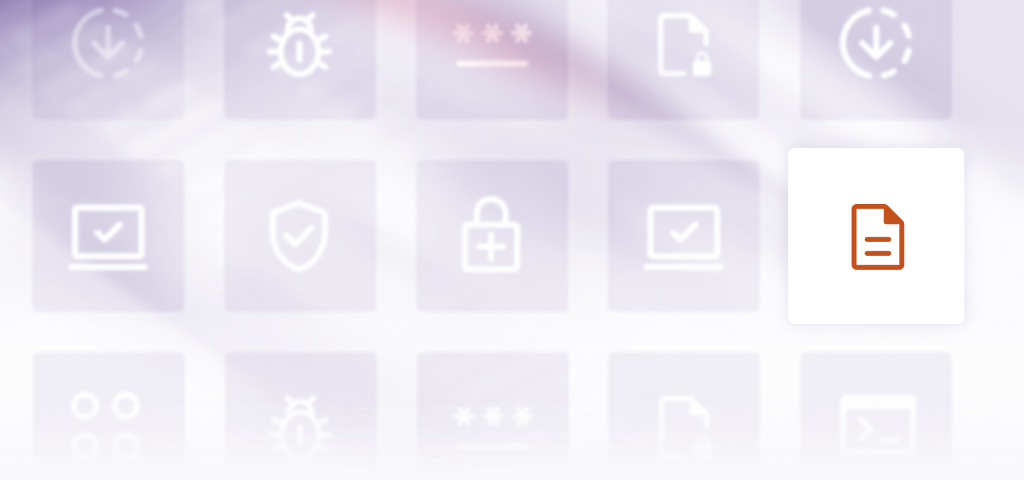Exposed: How WordPress admin emails are mined by hackers
A WordPress administrator account is the heart of a website. It holds the keys to content, user data, and the site’s very structure. Many site owners focus on strong passwords and regular backups, believing their digital assets are secure. Yet, a more stealthy threat operates in the shadows: the systematic harvesting of the single most critical piece of information – the admin email address. This isn’t just a contact detail; it’s the master key that can unlock the entire kingdom.
Understanding how hackers mine WordPress for admin email addresses is the first critical step toward building a truly impenetrable defense. Once this email is exposed, it opens the floodgates to a barrage of attacks, from relentless brute-force attempts to sophisticated phishing schemes designed to trick administrators into handing over complete control.
This post exposes the exact methods attackers use to find this crucial data point and lays out a clear, actionable plan to lock down admin accounts and fortify any WordPress site.
Key takeaways
Section titled Key takeaways- Learn how hackers discover WordPress admin emails using common tools and tactics
- Understand how default WordPress settings can expose sensitive user data
- See how an exposed admin email leads to brute-force, phishing, and takeover attacks
- Find out where emails are most often leaked (contact pages, comments, plugins)
- Get a clear, 3-step plan to protect your admin email using AIOS
- Walk away knowing how to block user enumeration, secure logins, and activate a firewall
The Silent Hunt: How your Admin email is exposed
Section titled The Silent Hunt: How your Admin email is exposedHackers don’t need advanced exploits to find your admin email address. They take advantage of WordPress’s default settings, publicly available pages, user data, and open endpoints to uncover it. Their methods are automated, efficient, and disturbingly effective.
Leaking by design: Exploiting WordPress user enumeration
Section titled Leaking by design: Exploiting WordPress user enumerationUser enumeration is a technique where an attacker probes a website to discover valid usernames. This is not a bug but an exploitation of features designed for usability.
How user enumeration exposes your Admin account
Section titled How user enumeration exposes your Admin accountThe danger isn’t just confirming a single username. Once attackers uncover multiple accounts, they can:
- Map out your entire user structure
- Identify high-privilege roles like administrators
- Focus their efforts on the most valuable targets (like your admin account)
Here’s how they do it:
Author archives
Section titled Author archivesBy default, WordPress creates a public archive page for every user who publishes content. These follow a predictable format:
yoursite.com/author/username
yoursite.com/?author=1 Attackers use automated scripts to scan through IDs and usernames. When a redirect leads to a valid author page, they’ve confirmed a username often the first step toward identifying the admin email.
WordPress REST API
Section titled WordPress REST APIThe REST API is a powerful tool for developers – but if left open, it can expose too much. This endpoint in particular reveals user information:
/wp-json/wp/v2/users/Unless restricted, it can list all registered users, including usernames, roles, and metadata. For attackers, this is an intelligence goldmine – the perfect launchpad for email scraping and brute-force attacks.
Digital breadcrumbs: Scraping public data and comments
Section titled Digital breadcrumbs: Scraping public data and commentsYour admin email might be more exposed than you think. Hackers don’t always need complex tools – often, they just follow the digital trail you’ve unintentionally left behind. From contact pages to comment forms, even small oversights can lead to big security risks.
How bots scrape your Admin email
Section titled How bots scrape your Admin emailVisible email addresses
Many WordPress sites display the admin email directly on:
- Contact pages
- Footers
- Blog post content
- Author bios
Hackers use bots that crawl the web and scan source code for email-like text. Even attempts to hide it – like writing admin [at] site [dot] com are easily decoded by modern scrapers.
Comment sections and metadata
Some plugins or themes expose commenter email addresses in the page’s code or markup. If the site admin has ever replied to a comment using their real account, that address might be sitting in plain sight – ready to be harvested.
Unlocked doors: Vulnerabilities in Themes and Plugins
Section titled Unlocked doors: Vulnerabilities in Themes and PluginsThe huge variety of WordPress themes and plugins is one of the platform’s biggest advantages, but it’s also one of its biggest risks.
Outdated, poorly coded, or pirated software can create serious vulnerabilities that expose sensitive information like admin emails and login credentials.
Here’s how hackers exploit these weaknesses:
- Accidental exposure: A flawed plugin might output sensitive data, including user tables with emails, into public-facing error messages.
- Known exploits: Attackers actively scan websites to identify the specific plugins and themes being used, along with their version numbers. They cross-reference this information with public vulnerability databases to find known, unpatched security holes they can exploit.
- Nulled plugins: So-called “nulled” or pirated versions of premium plugins are a particularly dangerous vector. They are often distributed for free but come with hidden backdoors that grant attackers remote access to steal data, including all user credentials.
The attack chain: from a single email to a full compromise
Section titled The attack chain: from a single email to a full compromiseFinding the admin email is just the first step. Once an attacker has this key piece of information, they can launch a multi-pronged attack to gain full control of your website. That single compromised email becomes a trust anchor, used to bypass multiple security layers and trigger a chain reaction of vulnerabilities.
Brute-force and credential stuffing
Section titled Brute-force and credential stuffingWith a confirmed username, attackers use bots to launch automated brute-force attacks, trying millions of password combinations against your login page.
In credential stuffing, they use stolen email/password pairs from other data breaches and try them on your site, hoping the admin has reused credentials. You can check if your email appears in known breaches at Have I been Pwned.
Targeted phishing attacks
Section titled Targeted phishing attacksOnce hackers know your admin email, phishing becomes much more convincing. They may impersonate WordPress, a plugin developer, or your hosting provider – urging you to click a fake login link and unknowingly hand over your credentials.
Account takeover attempts
Section titled Account takeover attemptsThe easiest path to full control? The “Forgot Password” function. If hackers compromise your email account (via phishing or another breach), they can intercept the reset link and lock you out of your own site -permanently.
Your digital fortress: A step-by-step protection plan
Section titled Your digital fortress: A step-by-step protection planProtecting your WordPress site from these threats isn’t about reacting – it’s about building a layered defense that shuts attackers out before they get in.
In this section, we’ll walk through a practical protection plan using AIOS as a real-world example. AIOS includes all the tools needed to lock down the most common vulnerabilities and turn a soft target into a hardened, secure site.
Step 1: Cloak your identity by preventing user enumeration
Section titled Step 1: Cloak your identity by preventing user enumerationThe first line of defense is hiding your admin identity from bots and scanners. AIOS makes this simple with its User Security settings:
- Prevent user enumeration: Blocks bots from scanning author archives and REST API endpoints for usernames.
- Username checks: Flags accounts where the display name matches the login name- one of the most common admin oversights.
- Admin rename support: Encourages changing the default “admin” username to reduce risk.
Step 2: Bar the gates with hardened login security
Section titled Step 2: Bar the gates with hardened login securityOnce your identity is hidden, the next step is locking down your login page. AIOS provides layered protection that stops attacks before they start:
- Rename login page: The AIOS Rename Login Page (located under Brute Force > Rename login page) feature allows an administrator to change the default login URL from wp-login.php to a custom, secret address. This one move instantly neutralizes all automated bots programmed to attack the default URL, effectively making the front door disappear.
- Brute-Force protection: The Login Lockout (located under User Security > Login lockout) feature automatically detects and blocks IP addresses that generate too many failed login attempts. This renders brute-force attacks futile, as the attacking bot is quickly banned from the server.
- Two-factor authentication (TFA): TFA is the ultimate login safeguard. Even if an attacker somehow obtains the correct username and password, they cannot log in without a time-sensitive code from the administrator’s mobile device. AIOS provides robust TFA (located under Two Factor Auth in the main plugin menu) that integrates seamlessly with authenticator apps like Google Authenticator, adding a critical layer of security.
The single best defense is layering. Hide your login page, enforce strong passwords, and enable Two-Factor Authentication. This combination makes your admin account an exceptionally difficult and unattractive target for attackers.
Step 3: Activate the perimeter shield with the AIOS firewall
Section titled Step 3: Activate the perimeter shield with the AIOS firewallA Web Application Firewall (WAF) acts as a perimeter shield, inspecting all incoming traffic and blocking malicious requests before they can even reach WordPress. The AIOS firewall includes:
- Pre-configured rulesets: Blocks SQL injections, cross-site scripting (XSS), and common plugin exploit patterns using 6G firewall rules.
- REST API and XML-RPC controls: Restrict access for unauthenticated users to eliminate user enumeration loopholes.
- Malicious traffic filtering: Inspects and filters all incoming requests before they hit your WordPress core.
Conclusion
Section titled ConclusionYour WordPress admin email is one of the most valuable assets a hacker can target – but the tactics used to find it are not only predictable, they’re entirely preventable.
Robust security isn’t about reacting after an attack. It’s about staying one step ahead. By following a simple, three-step strategy:
- Hide your admin identity
- Lock down your login page
- Activate a strong firewall
By following these steps, you can turn your site from vulnerable to virtually impenetrable.
Security isn’t about paranoia. It’s about preparation. And with the right tools and knowledge, any WordPress site can become a digital fortress.
Ready to lock down your admin email?
Your admin email is the gateway to your entire site. AIOS protects it with tools that block user enumeration, stop brute-force attacks, and shield your login with a firewall and two-factor authentication.
FAQs
Section titled FAQsWhy do hackers want my WordPress admin email address?
Because it’s often the key to launching targeted attacks like brute-force logins, phishing scams, and account takeovers. With access to your admin email, attackers can often reset your password or craft fake login pages to trick you.
How can I check if my admin email has been exposed in a breach?
You can use services like Have I Been Pwned to see if your email has appeared in any known data breaches.
What is user enumeration, and why is it dangerous?
User enumeration is when hackers probe your site to discover valid usernames (like your admin login). Once they know the username, it’s easier for them to try and break in using brute-force or credential stuffing attacks.
Can I hide my admin email from public view in WordPress?
Yes. Avoid displaying it on contact pages or in plain text in posts and comments. You should also use a plugin like AIOS to prevent user enumeration and restrict API endpoints that leak user metadata.
What’s the easiest way to protect my admin email address?
Use a plugin like All-In-One Security (AIOS) to disable user enumeration, hide your login page, and enable features like two-factor authentication (2FA) and brute-force protection.
Do bots really scan my site for emails?
Yes. Bots crawl millions of pages daily, looking for anything that resembles an email address – even obfuscated formats like admin [at] yoursite [dot] com.
What should I do if I suspect my admin email has been compromised?
Immediately change your WordPress password, enable 2FA, and review your site’s user accounts and login history. If you’re site has been hacked, it’s also smart to scan your site for malware and suspicious plugins.
About the author

Alexandru Bucsa
Alex is our All-In-One Security Product Manager. With more than six years of WordPress experience, he listens closely to what users need and works hard to make AIOS even better. Drawing on his background in forensic investigations, Alex loves diving into problems to understand their causes and find practical fixes that truly help our community.
Categories
AIOS
Comprehensive, feature-rich, security for WordPress. Malware scanning, firewall, an audit log and much more. Powerful, trusted and easy to use.
From just $70 for the year.
More stories
-

How to track your website traffic without cookies
Learn how cookie-free analytics works, why it matters for privacy, and how to set it up on WordPress using modern, privacy-friendly tools.
-

How to block a country in WordPress
Learn how to block a country in WordPress safely using AIOS, .htaccess rules, or CDN firewalls. Learn the best methods to protect your site without harming SEO.
-

Best spam protection plugins for WordPress
This guide compares the best WordPress spam protection plugins to help you block bots, protect discussions, and keep your site clean.
-

Best CAPTCHA plugins for WordPress
Learn why a WordPress captcha plugin is essential for protecting your site from unwanted spam and malicious activity.
